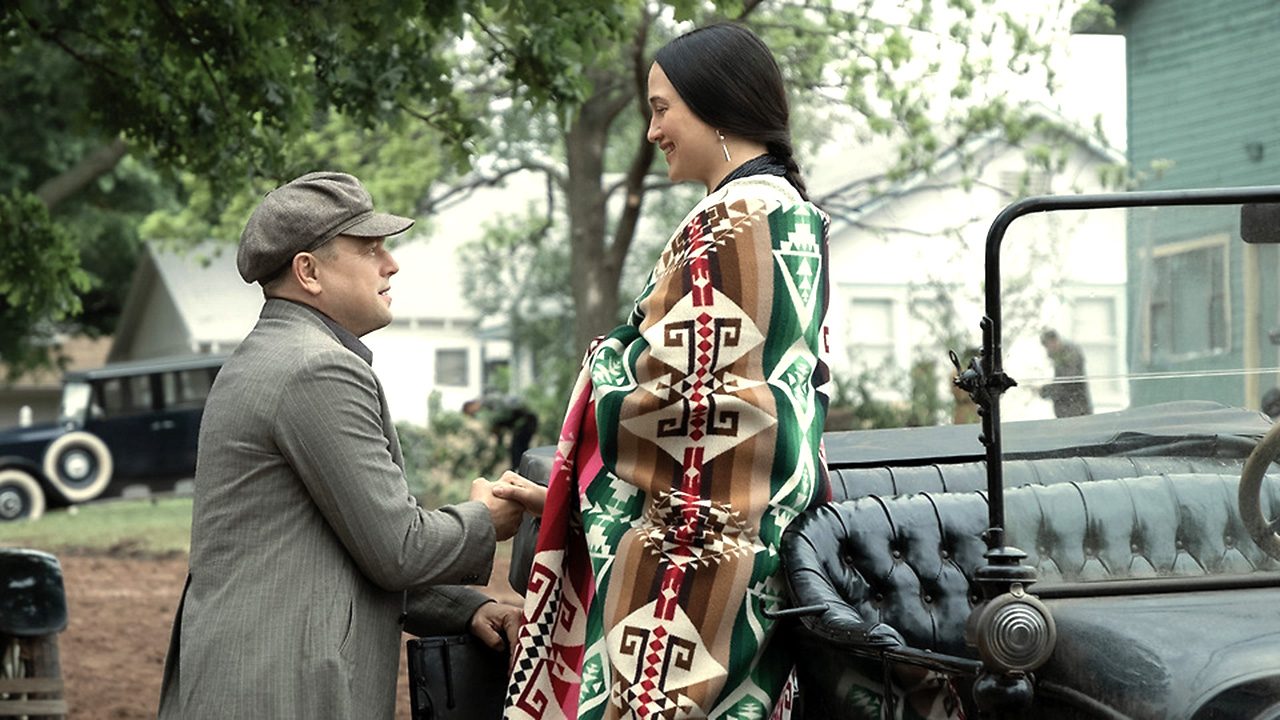A colossal examination of evil

MOVIE REVIEW
Killers of the Flower Moon
Directed by Martin Scorsese
By Brontë H. Lacsamana Reporter
THE OSAGE Murders refer to a series of killings of members of the Osage, a Native American tribe that settled in Oklahoma in the 1910s. These crimes were committed by white men who wanted to get their hands on the wealth of these Osage, whose land produced valuable oil at the time.
They did this by marrying into the Native families so they could inherit headrights that entitled them to growing fortunes. After that, many of the Osage would be mysteriously killed.
This largely unknown, gruesome piece of history that stretched from the 1910s to the 1930s is the subject of Martin Scorsese’s latest Western crime thriller.
Killers of the Flower Moon (2023) is a towering epic that lays bare the flawed core of the American dream, turning the journalistic nonfiction book of the same name that it is based on into a haunting, engaging piece of cinema.
Written by David Grann in 2017, the book is a thorough investigation of the murders. Meanwhile, Scorsese’s picture focuses on what seems to be a love story at its heart, between war vet Ernest Burkhart (played by Leonardo DiCaprio) and Osage woman Mollie Kyle (played by Lily Gladstone).
This switch in point-of-view is perfect, given that it’s Scorsese at the helm. A straight adaptation of the book could have been a compelling, bleak police procedural, but the film does much more with it. The characters of Burkhart and William King Hale (played by Robert De Niro), the white men who perpetrate the murders, are depicted as insidious, hungry wolves in sheep’s clothing, posing as well-meaning friends and family to the Osage, all while they secretly stalk their prey and scheme to swallow the tribe whole.
With this film, Scorsese once again raises the bar in putting forth his career-long thesis on the rot of man. Like GoodFellas and Casino before it, Killers of the Flower Moon has a familiar, striking structure, as those who prosper by brutal means build a rhythm of bodies falling left and right. But the glitz and glamour that come with those previous films are appropriately stripped down in favor of sprawling visuals of the landscape, of local culture, of moments of reflection.
Edited by Scorsese’s longtime collaborator Thelma Schoonmaker, this monumental undertaking is woven together masterfully. The pacing and sense of movement are just right, making the three-and-a-half-hour runtime feel shorter than it is.
DiCaprio and De Niro, uniting in a single Scorsese film for the first time ever, turn in chilling performances. They each portray varying faces of the human capacity for evil. The former as Burkhart is an easily manipulated middleman who morally compromises himself for what appear to be great benefits. The latter as Hale is truly insidious as a powerful man who operates in the guise of a kind, loving grandpa to all, supposedly taking care of the community.
However, it’s Lily Gladstone as Molly who is the heart of the film. Here, she is a beautiful, poised woman with soulful eyes, capable of showing depths of love and grief with just a steady look at her traitorous husband. At times, her face honestly does more acting than DiCaprio and De Niro combined.
It’s also impossible not to wonder what this film would be like if it were told from her perspective instead. Osage consultants have publicly expressed conflicting thoughts about the choice in perspective, though it’s commendable on Scorsese’s part to have worked so closely with them all throughout. It tells of a painful part of their history and showcases their language, clothing, and traditions, authentic to the time period, with the utmost accuracy and respect.
Make no mistake; this film is made with an outsider’s eyes and geared towards the consumption of outsiders, not just of the Osage. In the future, hopefully an Osage gets the chance to make a film showing their perspective of their history, but the fact of the matter is, a Scorsese-scale project had to be made first for the story to gain global exposure.
Here, experiencing the story through the lens of Burkhart provides an understanding of the murderous scheme that the book brought to light. It becomes a brooding, monumental examination of evil quite unlike anything else — and in a world full of it, evil is something worth studying.
The end of the film is (spoilers ahead!) also the perfect way for Scorsese to admit the limits inherent in the design of his work.
The scene shows a radio program that dramatizes the conclusion of the Osage murders — something that actually happened, according to the book — with Scorsese himself playing the radio host. With this, he takes a stab at the existence of his film and, by extension, the existence of much of his crime-laden filmography. He highlights that he is but a mere storyteller who is crafting entertainment out of real events, as gruesome as they may be.
Ultimately, Killers of the Flower Moon is a story of how the American dream consumes and destroys, in the form of men who build a world upon a foundation of greed and violence.
Much like many Scorsese films before it, everything comes undone just as quickly as it all came together, partly because these men are barely competent schemers and — most importantly — because the world had stopped turning a blind eye to their schemes.
MTRCB Rating: R-13



